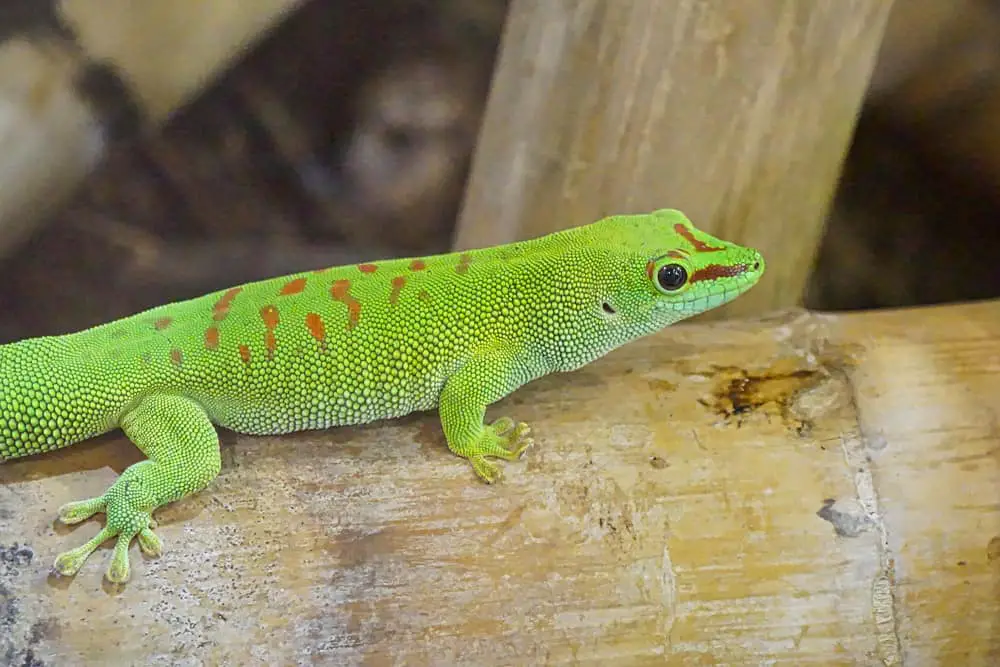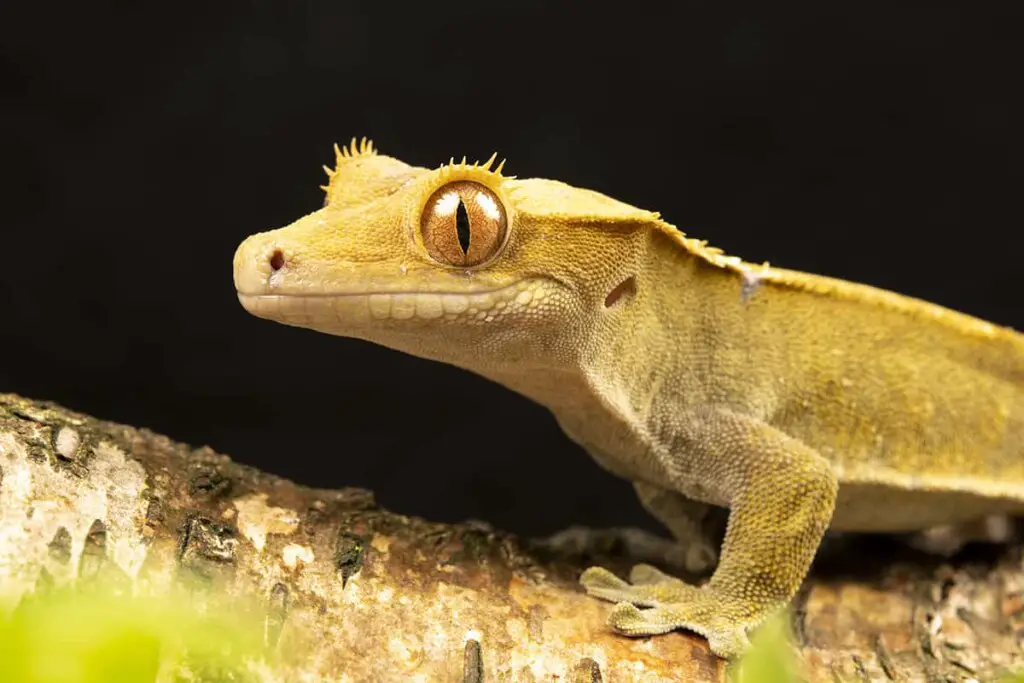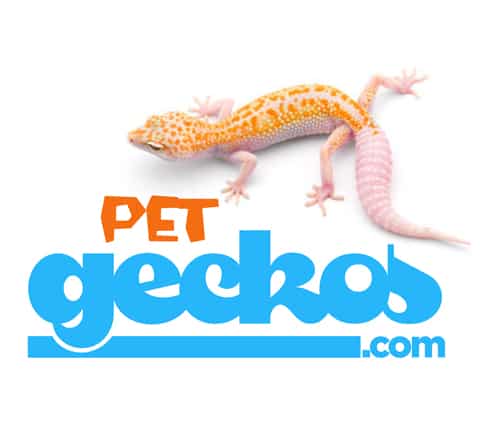
Geckos are more and more popular these days as pets. They are adored by so many small pet and reptile aficionados. Almost like by design, they come in such a wide range of colors, and attributes–the number of gecko species native to habitats worldwide is surprising.
How many species exactly? There are over 1,800 gecko species worldwide! Geckos throughout the world are found in unique spots with their unique temperament. This makes keeping them a little challenging, but with a little thought and effort, very doable. Read on to learn some cool things about the most popular species and which seem to make the best pets.
Popular Types of Geckos
Each gecko species boasts particular physical features and has varying habitat requirements. It’s crucial to consider these necessities when caring for them, as every gecko needs an appropriate environment according to their species’ demands. Here’s a quick introduction to 17 types of Geckos out there, beginning with the most popular–The Leopard Gecko…
Table of Contents
- Popular Types of Geckos
- Leopard Gecko
- Mediterranean House Gecko (Moon Gecko)
- Gold Dust Day Geckos
- White-Lined Gecko
- Tokay Gecko
- African Fat-Tailed Gecko
- Chinese Cave Gecko
- Leachianus Gecko (The ” Leachy”)
- Flying Gecko
- Giant Day Gecko
- Yellow-Headed Day Gecko
- Gargoyle Gecko
- Crested Gecko
- Golden Gecko
- Chahoua Gecko (“Chewie”)
- Frog-Eyed Gecko
- What is the Best Kind of Gecko to Have as a Pet?
Leopard Gecko
Leopard geckos are extremely popular amongst reptile lovers. They gained their name due to their striking yellow-tan skin, adorned with dispersed brown or black spots. This gecko species lacks rounded toe pads, and they have eyelids, making them truly unique compared with many other gecko species.
This gecko species is relatively low-maintenance, as they do not need excessively decorated ornaments in their environments and don’t require large enclosures. Leopard geckos enjoy living amongst rocks and small logs, as they are not genetically attuned to climbing like many other species.
Mediterranean House Gecko (Moon Gecko)
Mediterranean House geckos, native to Mediterranean regions, have tan skin with black spots, and some even have speckles of purple in between. They are nocturnal, equipped with lidless eyes and long digits that help them traverse their environments.
They are attracted to light, and enjoy catching wandering prey. They can thrive in varying conditions but appreciate living in coastal regions. This gecko species is also naturally resistant to pesticides, resulting in an abundant population in the wild.
Gold Dust Day Geckos
Gold Dust Day geckos are typically green with bright accents across their bodies and are quite small, measuring only 6 inches long. This gecko species is easy to manage in an appropriate environment and is quite friendly towards humans. They don’t require much space but will thrive in enclosures of varying sizes, as long as it’s decorated with natural elements to make them more comfortable.
This gecko species loves to climb whenever it gets the chance, so tall enclosures are a must. They appreciate having access to climbable networks and surfaces, such as thin vines or cork branches. Although Gold Dust day geckos are otherwise friendly, they will become aggressive or territorial with other geckos.
White-Lined Gecko
The White-Lined gecko can be found in shades of tan, brown, or green. But, they have a very distinguishing and prominent white streak that clearly outlines their frame. This gecko species is undoubtedly alluring, but their temperament is not as personable as many other species.
They can become agitated quickly and may bite if they are afraid. This gecko species is adept at escaping and does not appreciate being handled. Ensuring that they have an environment that mimics their natural habitat is a must. The enclosure should be filled with various plants, climbing branches, and vines to make them more comfortable.
Tokay Gecko
Tokay geckos flaunt an exceptional appearance, with gray or light blue skin adorned with plenty of red, yellow, or green spots. Despite their adorable appearance, these geckos can be aggressive and may bite humans, even though they may become tamer with age. They are infamous for fighting and even killing other geckos.
African Fat-Tailed Gecko
Hailing from West Africa, the African Fat-Tailed gecko comes in a wide range of colors but can be identified by its fat tail. They use these enlarged tails to store energy in the form of fat, and they are quite tame.
They like to be handled once they are comfortable living in captivity, and some even respond to calls and gestures from caregivers. Although they are mostly timid, males can be aggressive and should never be housed together. Females are less territorial and may be content living with each other.
Chinese Cave Gecko
Chinese Cave geckos, native to China’s caves and lowlands, are quite rare but are highly sought after. They have mostly purple bodies with black spots across the back, adorned with bright yellow stripes that wrap around the body and tail.
Their vibrantly red eyes make for an exceptionally eccentric appearance. While it may look menacing, this gecko species is quite docile, and their nocturnal nature means they spend most of the day hiding in their enclosures.
Leachianus Gecko (The ” Leachy”)
Otherwise known as the Caledonian Giant gecko or other names, the Leachianus gecko is the largest species and can grow to around 17 inches. They love to climb, so enclosures need plenty of height and vertical climbing amenities.
Despite their large size, they are quite peaceful and relaxed creatures. They don’t like to be handled much and can become territorial with other geckos, but they can form relationships with some geckos.
Flying Gecko
Native to Southeast Asia, the Flying gecko is quite uncommon. They have brown skin with splotchy patterns, useful for camouflage in the wild. This gecko species can fly between treetops thanks to their flappy skin and webbed feet, which catch the wind when they leap like genetic wingsuits. They should not be handled since they are anxious and have fragile skin.
Giant Day Gecko

Giant day geckos boast bright and vibrant aesthetics with green skin covered with red and yellow accents. They are quite large, measuring around 12 inches long once they mature. They love climbing, and robust amenities should be provided for them to remain happy and healthy. They don’t like being handled and may even shed their skin if they are afraid.
Yellow-Headed Day Gecko
As the smallest member of the day gecko family, the Yellow-Headed Day Gecko is quite distinctive. Their turquoise-colored lower backs and tails are enhanced by pale brown spots and a yellow head – hence the name. Their unique patterns and colors are visible from above, as their bodies flaunt a distinct flattened shape.
While this gecko species is small and fragile, they are extremely active. Yellow-Headed day geckos love to traverse around their enclosures and occupy themselves very easily. They appreciate having plenty of space, surrounded by natural decorations and plants.
Gargoyle Gecko
Gargoyle geckos are medium-sized with triangular-shaped heads and a unique splotched pattern. Their colors range between diverse brown, black, white, and gray mixtures, with potential yellow, red, and orange accents. This gecko species has large and bulbous eyes, which give them a particularly intimidating aesthetic.
Despite their menacing appearance, Gargoyle geckos are quite peaceful and timid creatures, and they appreciate occasional affection from their loved ones. Still, they appreciate being able to move around freely, and they can become aggressive or territorial with other geckos.
Crested Gecko

Crested geckos, formerly believed to be extinct, have become incredibly popular for the unique blend of robust physical traits and an endearing demeanor. They have fringed crests beginning at their heads extending downwards into their back, which boasts a distinctive spiky appearance.
This gecko species can be found in a wide range of colors but can frequently be found in neutral shades ranging from brown to tan. Some Crested geckos boast brighter colors as well, and this species is adored for its gentle and loveable personality.
Golden Gecko
Golden geckos have a distinct yellow-golden color, with males boasting more vibrant colors than females. Some golden geckos are adorned with small black splotches across the back, and females may have hints of green across their bodies.
This gecko species is relatively uncommon, and they can be challenging to care for since they are naturally apprehensive towards humans. They are quick to bite and do not like to be handled. Their skin is also quite fragile, making it susceptible to damage from handling.
Chahoua Gecko (“Chewie”)
Chahoua geckos are masterful at camouflaging, as their skin closely resembles bark. They would typically blend in with their environment in the wild and need to climb freely to remain happy in captivity. This gecko species can be quite energetic, and they appreciate being handled by loved ones.
Frog-Eyed Gecko
Native to Middle East Asia, Frog-Eyed geckos can be found in a wide range of colors and patterns. All variants have round heads and bulbous eyes, resembling a frog. This gecko species is quite straightforward to care for, as they are not overly fussy with food and appreciate simple desert-style enclosures.
What is the Best Kind of Gecko to Have as a Pet?
Out of the most common gecko species, the Crested Gecko has been dubbed the best species to own as a household pet. They do not become aggressive easily, enjoy being handled lovingly by caregivers, and are quite straightforward to care for. Topped with stunning visual appearances and peaceful temperaments, Crested Geckos make amazing pets, even for beginners.
Other gecko species that make great pets include the Leopard Gecko, Fat-Tailed Gecko, Gargoyle Gecko, Frog-Eyed Gecko, Giant Day Gecko, and the Gold Dust Day Gecko.
There are tons of amazing gecko species out there, and choosing a gecko species that would be suitable as a pet can be quite challenging. With some appropriate species research and plenty of love and patience, many of these little reptiles can thrive in captivity and make excellent household pets.
Sources
